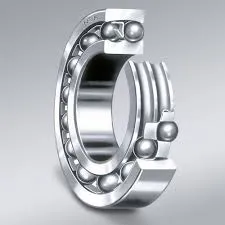
Nov . 30, 2024 07:19 Back to list
Exploring the Four Main Categories of Roller Bearings for Various Applications
Four Types of Roller Bearings
Roller bearings are essential mechanical components used to reduce friction and support loads in various applications. Unlike traditional ball bearings, roller bearings utilize cylindrical rollers to distribute loads more effectively, proving advantageous in several industrial and automotive applications. This article explores four primary types of roller bearings cylindrical roller bearings, spherical roller bearings, tapered roller bearings, and needle roller bearings. Each type has unique characteristics, advantages, and ideal applications, making them indispensable in modern engineering.
1. Cylindrical Roller Bearings
Cylindrical roller bearings consist of an inner ring, an outer ring, and cylindrical rollers which are positioned between the two. These bearings are designed to handle heavy radial loads due to their high radial capacity. They come in different configurations, including single-row and multi-row varieties. The inherent design allows for minimal friction and high-speed performance.
One of the notable advantages of cylindrical roller bearings is their ability to accommodate misalignment between the shaft and housing. This is particularly useful in applications where shaft deflection may occur. Commonly found in electric motors, gearboxes, and various industrial machinery, their robust design ensures a long service life and reliable operation even under demanding conditions.
Spherical roller bearings feature an inner ring, an outer ring, and two rows of spherical-shaped rollers. This unique design enables the bearings to accommodate both radial and axial loads in either direction, making them suitable for challenging operating conditions. The outer ring is designed with a spherical shape, allowing for self-alignment and the ability to adjust to misalignment caused by shaft deflection or mounting errors.
Due to their multi-directional load capacity, spherical roller bearings are frequently used in applications like wind turbines, automotive applications, and heavy machinery subjected to heavy shock loads. Their capacity to handle misalignments and axial loads, combined with high durability, makes them an optimal choice for various operational needs.
3. Tapered Roller Bearings
four types of roller bearings

Tapered roller bearings consist of an inner ring, an outer ring, and tapered rollers that facilitate load distribution. The tapered design allows these bearings to handle significant axial and radial loads simultaneously. The angle at which the rollers are aligned allows for the bearing to effectively accommodate thrust loads, making them an excellent choice for applications that require high radial loads and axial thrust capabilities.
This type of bearing is widely used in automotive applications, including in the hubs of wheels and transmissions. They are also prevalent in various engineering sectors such as construction machinery, where effective load handling is crucial. Tapered roller bearings are known for their efficiency in operating under high speeds and loads, ensuring reliable performance and longevity.
4. Needle Roller Bearings
Needle roller bearings are characterized by their thin, elongated rollers which resemble needles, hence the name. Despite their small size, needle roller bearings can accommodate high radial loads due to their large surface area contact. This significantly reduces friction, allowing for smoother operation in compact spaces.
These bearings are commonly used in applications where space is a premium, such as in motorcycles, automotive engines, and industrial machinery. Needle roller bearings can be found in numerous applications, including valves, automotive components, and other machinery requiring lower radial space with robust loading capabilities.
Conclusion
Roller bearings are pivotal in today's machinery, from industrial equipment to automotive applications. Understanding the different types of roller bearings—cylindrical, spherical, tapered, and needle—enables engineers and technicians to select the most suitable bearing type for specific applications. Each type offers unique benefits tailored to address specific loading conditions, misalignment issues, and space constraints.
In summary, whether you're designing a new product, maintaining existing machinery, or seeking to optimize performance, considering the appropriate roller bearing type can significantly enhance operational efficiency and reliability. With continuous advancements in materials and designs, the future of roller bearings looks promising, catering to increasingly demanding applications across various industries.
Latest news
-
Premium Deep Groove Ball Bearings | High Speed & Reliability
NewsAug.29,2025
-
Durable Scaffolding Clamps - Secure & Reliable Tube Connectors
NewsAug.28,2025
-
Common Failures in Thrust Ball Bearings and Solutions
NewsAug.22,2025
-
How Tapered Roller Bearings Can Take Shock Loads
NewsAug.22,2025
-
Angular Bearings in High-Precision Spindles
NewsAug.22,2025
-
The Impact of Misalignment on Cylindrical Roller Bearing Performance
NewsAug.22,2025
